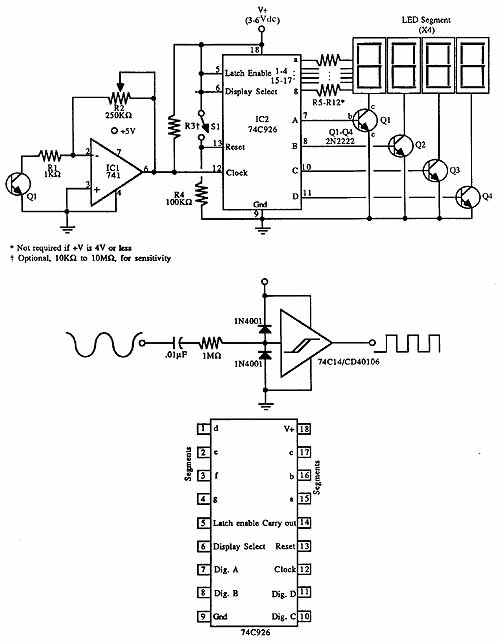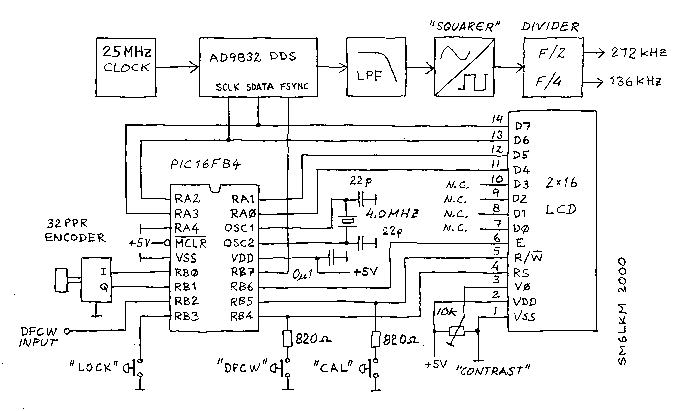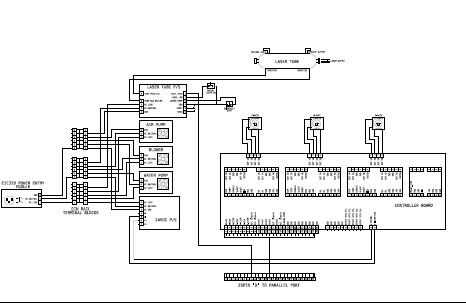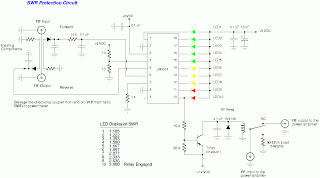
Build a Michelson Interferometer

Michelson was the inventor of a unique interferometer that opened up new vistas in the science of light and optics. With the interferometer, Michelson was able to determine, with unprecedented accuracy, the speed of light, the wavelength and frequency of light emitted by different sources, and the constancy of the speed of light through any given medium, among other feats. Michelson's apparatus (actually a modified version of it) can be reasonably duplicated in the home shop or garage using a minimum of optical components. When finished, users will be able to conduct many of the same experiments performed by Michelson and others. This project provides an excellent springboard for a science fair project. Albert A. Michelson was born in Prussia in 1872. At the age of two, he moved with his parents to the United States, settling in Virginia City, Nevada, during a mining boom. Michelson's father was a shopkeeper who serviced the miners and local community. From an early age, Michelson demonstrated a strong interest and aptitude in mathematics. Although his parents could not afford a private college, Michelson was accepted by the U.S. Naval Academy. After graduation and a brief period at sea, he became an instructor at the academy. His exploration of light physics began when an instructor asked him to demonstrate the Foucault method of measuring the speed of light. After studying the Foucault device, Michelson improved upon it and built his own version. In 1878, he repeated Foucault's speed of light measurements, achieving the most accurate results to date. Subsequently, Michelson designed another apparatus aimed at measuring the speed of light with unmatched precision. He also sought to investigate the concept of ether, a theoretical medium believed to permeate the universe. With a grant of about $500 from the Volta fund, Michelson began work on his first interferometer. The brass device consisted of two optical bench arms, each approximately three feet long, positioned in an asymmetrical cross with a beam splitter at the apex. At the ends of the arms, he placed a light source, two mirrors, and a viewing eyepiece. In operation, light from an Argand lamp was passed through a slit and lens, then split by the beam splitter. The two beams traveled to a pair of fully silvered mirrors and were redirected back through the beam splitter, arriving superimposed at the eyepiece.
The Michelson interferometer operates on the principle of lightwave interference, which occurs when two coherent light beams overlap. This device is particularly significant in the field of optics, as it allows for precise measurements of light properties through the analysis of interference patterns. The basic construction involves a light source, typically a monochromatic source such as a laser, which ensures that the light waves have a consistent frequency and phase.
In the setup, the beam splitter divides the incoming light beam into two separate paths. Each path leads to a mirror, which reflects the light back toward the beam splitter. Upon returning, the two beams recombine at the beam splitter and travel towards the viewing eyepiece. The resulting interference pattern, which can be observed through the eyepiece, is a series of bright and dark fringes. These fringes occur due to the constructive and destructive interference of the light waves, depending on their relative phase when they recombine.
Adjustments to the distance of the mirrors allow for fine-tuning of the interference pattern, enabling precise measurements of wavelength and, consequently, the speed of light. The Michelson interferometer has applications beyond measuring the speed of light; it is also used in various scientific fields for analyzing the properties of materials, detecting changes in distance, and even in the field of telecommunications for fiber optic testing.
In summary, the Michelson interferometer serves as a pivotal tool in optical science, showcasing the fundamental principles of lightwave interference while providing a practical means for experimentation and measurement in both educational and professional settings.Michelson was the inventor of a unique interferometer that opened up new vistas in the science of light and optics. With the interferometer, Michelson was able to determine ” with unprecedented accuracy ” the speed of light, the wavelength and frequency of light emitted by different sources, and the constancy of the speed of light through any given medium, among other feats.
Michelson`s apparatus (actually a modified version of it) can be reasonably duplicated in the home shop or garage using a minimum of optical components. When finished, you`ll be able to use your interferometer for many of the same experiments conducted by Michelson and others.
You will learn first-hand about lightwave interference and discover some interesting and useful properties of laser light. The interferometer project presented provides an excellent springboard for a science fair project. Albert A. Michelson was born in Prussia in 1872. As with many Europeans at the time, Michelson moved at the age of two with his parents to the United States.
They settled in the wide expanse of Virginia City, Nevada, which was then experiencing a mining boom. Michelson`s father was not a miner but a shopkeeper. He serviced the miners and local community with his dry goods store. Even at an early age, Michelson showed great interest and adeptness in mathematics. His parents could not afford a private college but Michelson did manage to be accepted by the U. S. Naval Academy. After graduation and a short stint at sea, he accepted a job as instructor at the academy. Michelson`s foray into light and light physics came after one of his instructors asked him to prepare a demonstration of the Foucault method of measuring the speed of light.
After studying the Foucault device, Michelson saw several ways that it could be made more accurate, and set about building an improved homemade version himself. In 1878 he repeated Foucault`s earlier speed of light measurements and achieved results that were the most accurate to date.
A few years later, Michelson began designs on another apparatus that he believed could measure the speed of light with unmatched accuracy. Michelson also wanted to learn more about what scientists of his time called ether, an invisible and undetectable material that surrounded all matter, including space, planets, and stars.
Though physical evidence of the ether had never been found, physicists knew it had to exist. In the 1860s, James Clerk Maxwell had determined, on a theoretical level, that light consists of electromagnetic waves. Others postulated that if light really consists of waves, like water or sound waves, it must travel in some medium.
That medium, though invisible, must be in every nook and cranny in the universe. With a grant of about $500 from the Volta fund, Michelson began work on his first interferometer. The brass device, shown in the sketch in ill. 9-1, consisted of two optical bench arms, each about three feet long. The arms were positioned in an asymmetrical cross, and in the apex of the cross, a beam splitter was placed. At the four ends of the arms he positioned a light source, two mirrors, and a viewing eyepiece. In operation, a beam of light from an Argand lamp (popular in vehicles and drinking pubs as well as in the laboratory) was passed through a slit and lens, then separated by the beam splitter.
The two beams were directed to a pair of fully silvered mirrors and re-directed back through the beam splitter, arriving superimposed over one another at the eyepiece. The function of Michelson`s interferometer was to split the nearly monochromatic light from the lamp two ways.
The two beams then traveled at right angles to one another, proceeding 🔗 External reference
The Michelson interferometer operates on the principle of lightwave interference, which occurs when two coherent light beams overlap. This device is particularly significant in the field of optics, as it allows for precise measurements of light properties through the analysis of interference patterns. The basic construction involves a light source, typically a monochromatic source such as a laser, which ensures that the light waves have a consistent frequency and phase.
In the setup, the beam splitter divides the incoming light beam into two separate paths. Each path leads to a mirror, which reflects the light back toward the beam splitter. Upon returning, the two beams recombine at the beam splitter and travel towards the viewing eyepiece. The resulting interference pattern, which can be observed through the eyepiece, is a series of bright and dark fringes. These fringes occur due to the constructive and destructive interference of the light waves, depending on their relative phase when they recombine.
Adjustments to the distance of the mirrors allow for fine-tuning of the interference pattern, enabling precise measurements of wavelength and, consequently, the speed of light. The Michelson interferometer has applications beyond measuring the speed of light; it is also used in various scientific fields for analyzing the properties of materials, detecting changes in distance, and even in the field of telecommunications for fiber optic testing.
In summary, the Michelson interferometer serves as a pivotal tool in optical science, showcasing the fundamental principles of lightwave interference while providing a practical means for experimentation and measurement in both educational and professional settings.Michelson was the inventor of a unique interferometer that opened up new vistas in the science of light and optics. With the interferometer, Michelson was able to determine ” with unprecedented accuracy ” the speed of light, the wavelength and frequency of light emitted by different sources, and the constancy of the speed of light through any given medium, among other feats.
Michelson`s apparatus (actually a modified version of it) can be reasonably duplicated in the home shop or garage using a minimum of optical components. When finished, you`ll be able to use your interferometer for many of the same experiments conducted by Michelson and others.
You will learn first-hand about lightwave interference and discover some interesting and useful properties of laser light. The interferometer project presented provides an excellent springboard for a science fair project. Albert A. Michelson was born in Prussia in 1872. As with many Europeans at the time, Michelson moved at the age of two with his parents to the United States.
They settled in the wide expanse of Virginia City, Nevada, which was then experiencing a mining boom. Michelson`s father was not a miner but a shopkeeper. He serviced the miners and local community with his dry goods store. Even at an early age, Michelson showed great interest and adeptness in mathematics. His parents could not afford a private college but Michelson did manage to be accepted by the U. S. Naval Academy. After graduation and a short stint at sea, he accepted a job as instructor at the academy. Michelson`s foray into light and light physics came after one of his instructors asked him to prepare a demonstration of the Foucault method of measuring the speed of light.
After studying the Foucault device, Michelson saw several ways that it could be made more accurate, and set about building an improved homemade version himself. In 1878 he repeated Foucault`s earlier speed of light measurements and achieved results that were the most accurate to date.
A few years later, Michelson began designs on another apparatus that he believed could measure the speed of light with unmatched accuracy. Michelson also wanted to learn more about what scientists of his time called ether, an invisible and undetectable material that surrounded all matter, including space, planets, and stars.
Though physical evidence of the ether had never been found, physicists knew it had to exist. In the 1860s, James Clerk Maxwell had determined, on a theoretical level, that light consists of electromagnetic waves. Others postulated that if light really consists of waves, like water or sound waves, it must travel in some medium.
That medium, though invisible, must be in every nook and cranny in the universe. With a grant of about $500 from the Volta fund, Michelson began work on his first interferometer. The brass device, shown in the sketch in ill. 9-1, consisted of two optical bench arms, each about three feet long. The arms were positioned in an asymmetrical cross, and in the apex of the cross, a beam splitter was placed. At the four ends of the arms he positioned a light source, two mirrors, and a viewing eyepiece. In operation, a beam of light from an Argand lamp (popular in vehicles and drinking pubs as well as in the laboratory) was passed through a slit and lens, then separated by the beam splitter.
The two beams were directed to a pair of fully silvered mirrors and re-directed back through the beam splitter, arriving superimposed over one another at the eyepiece. The function of Michelson`s interferometer was to split the nearly monochromatic light from the lamp two ways.
The two beams then traveled at right angles to one another, proceeding 🔗 External reference





